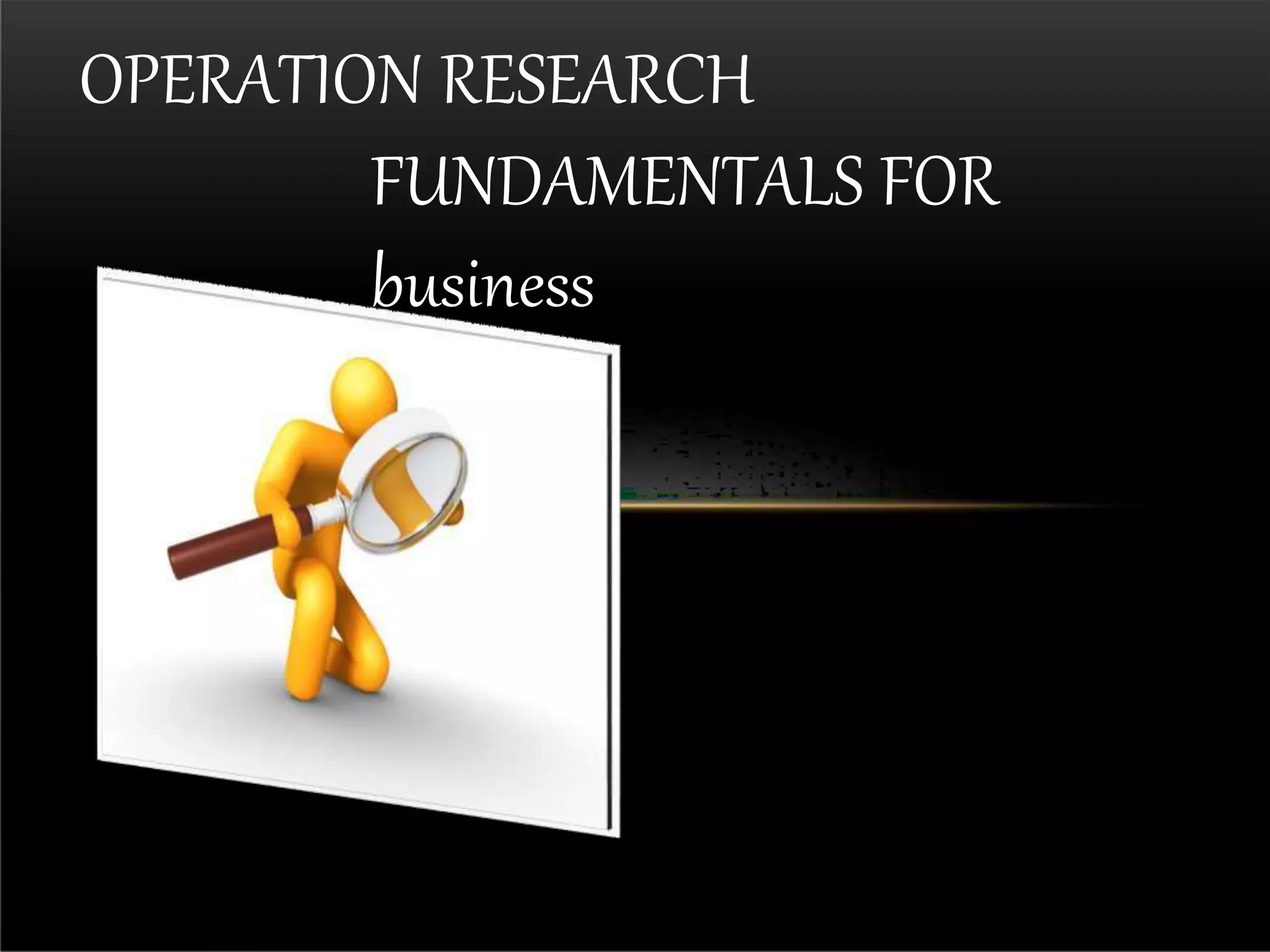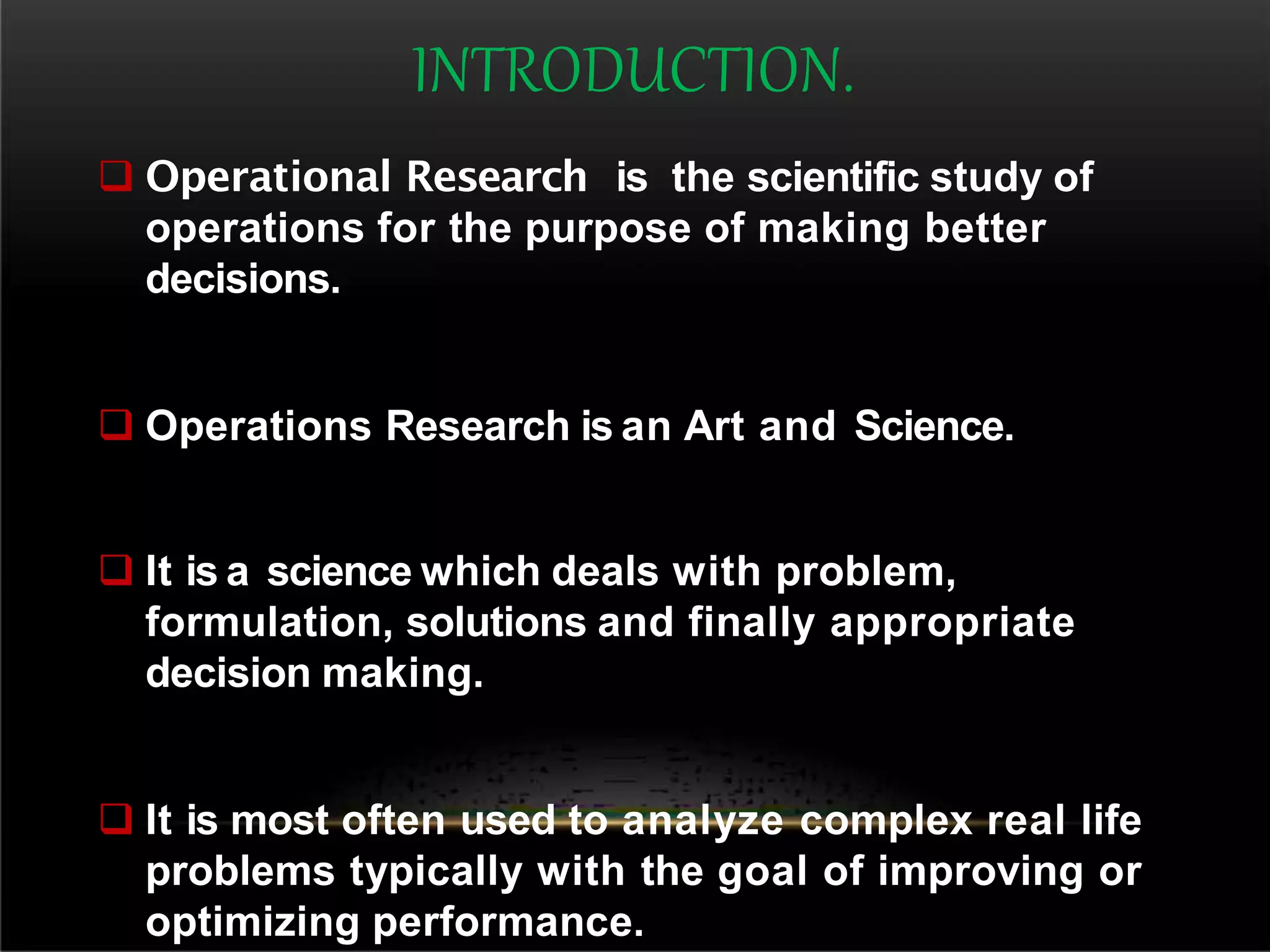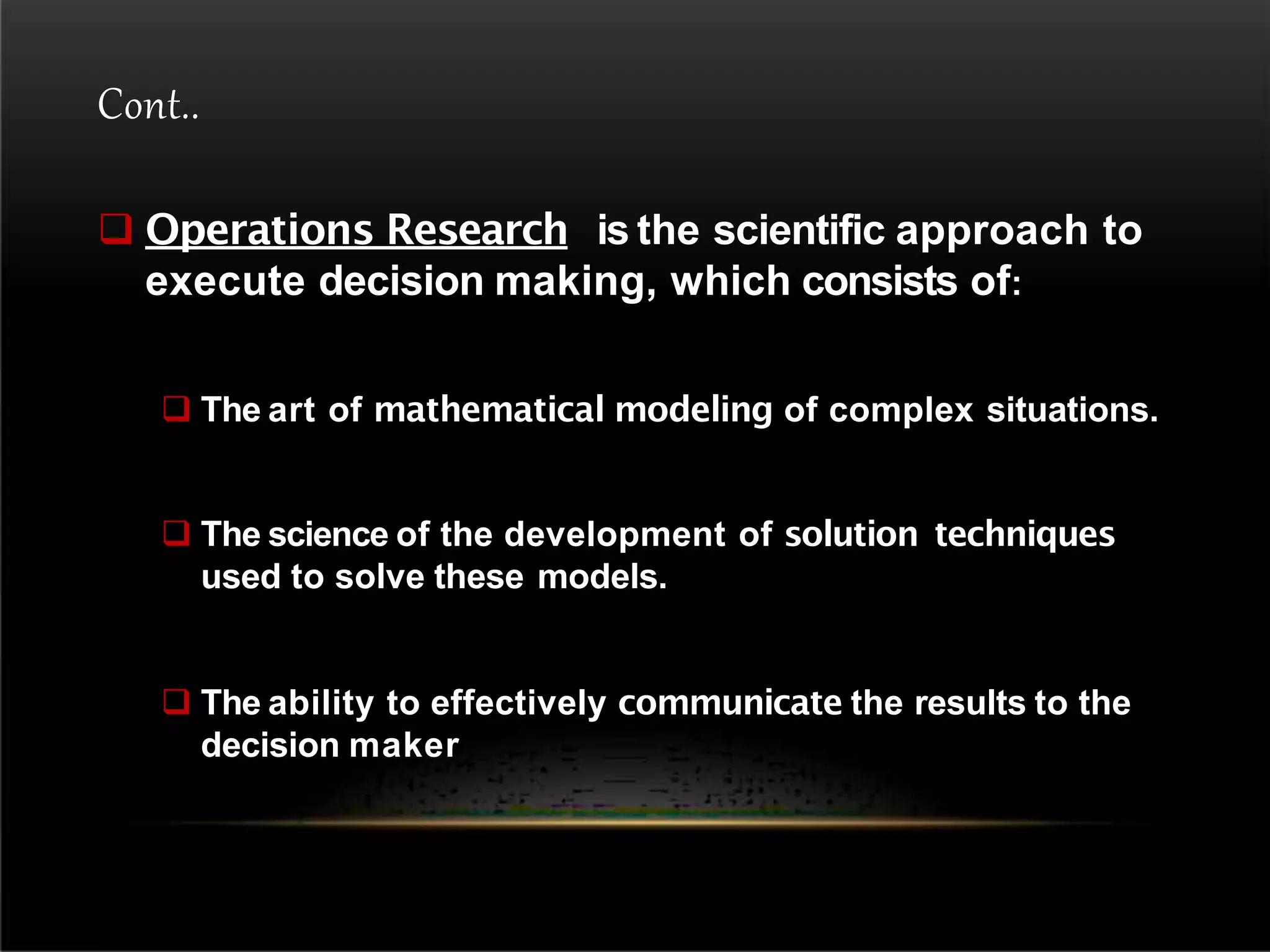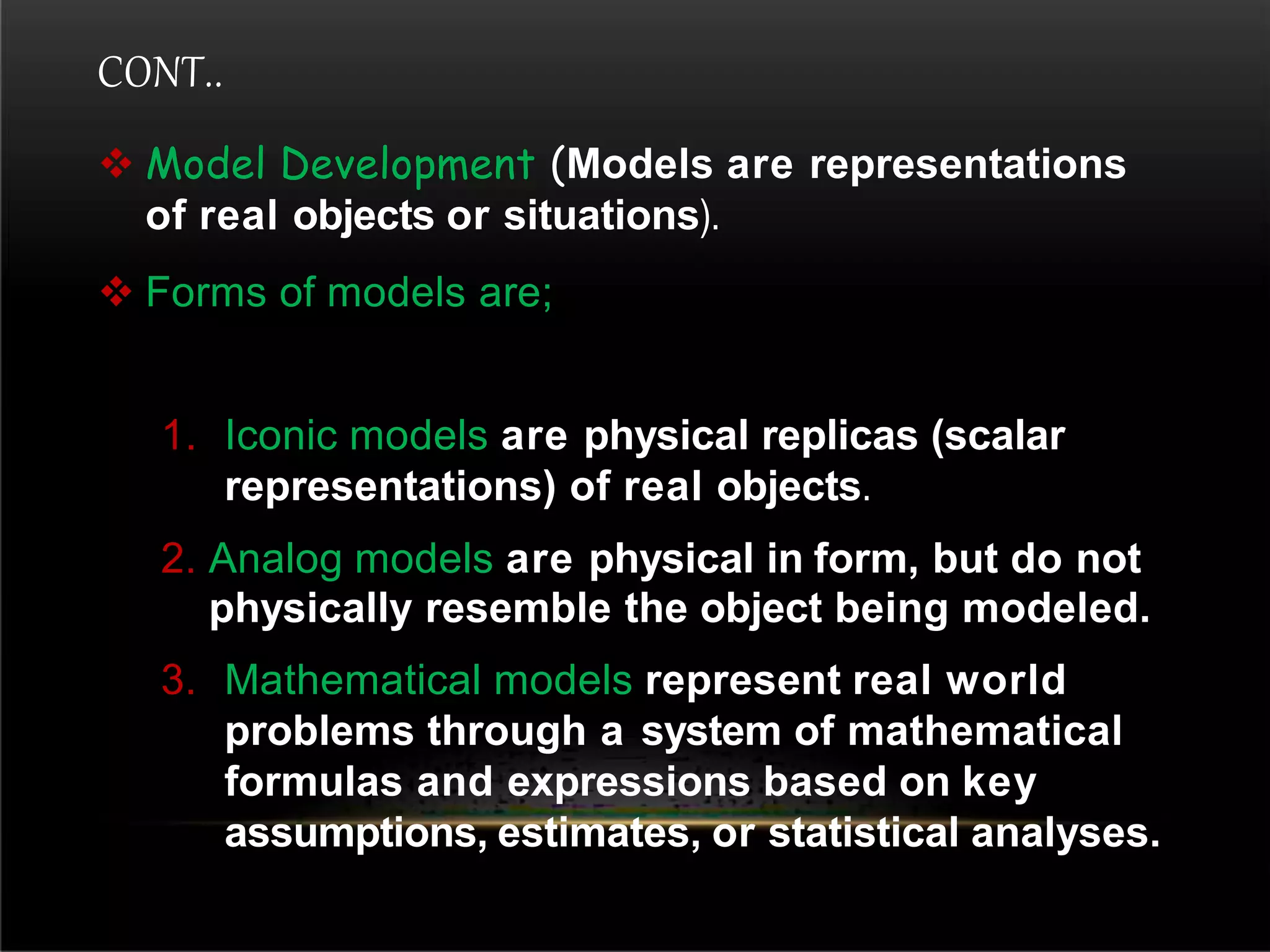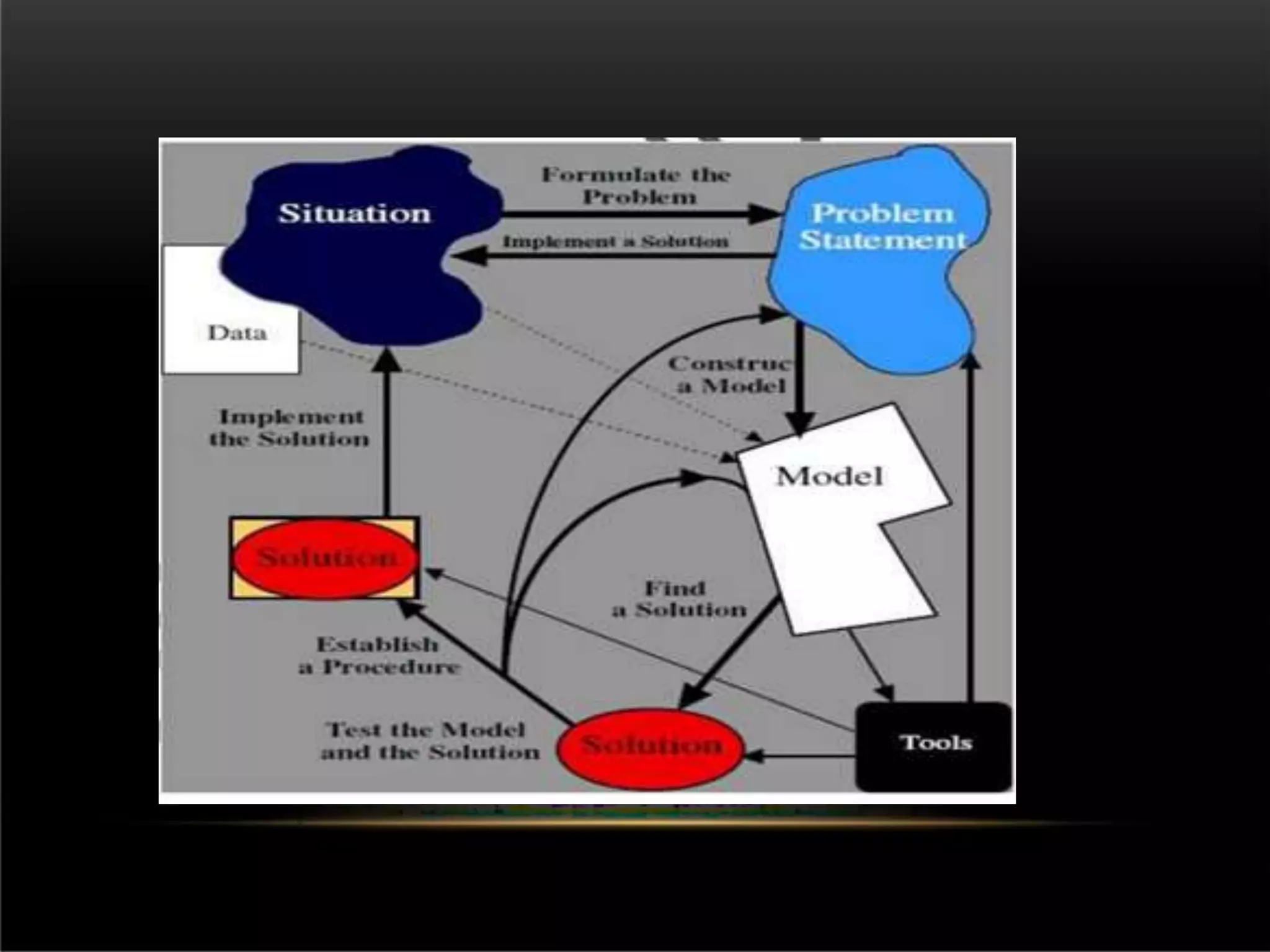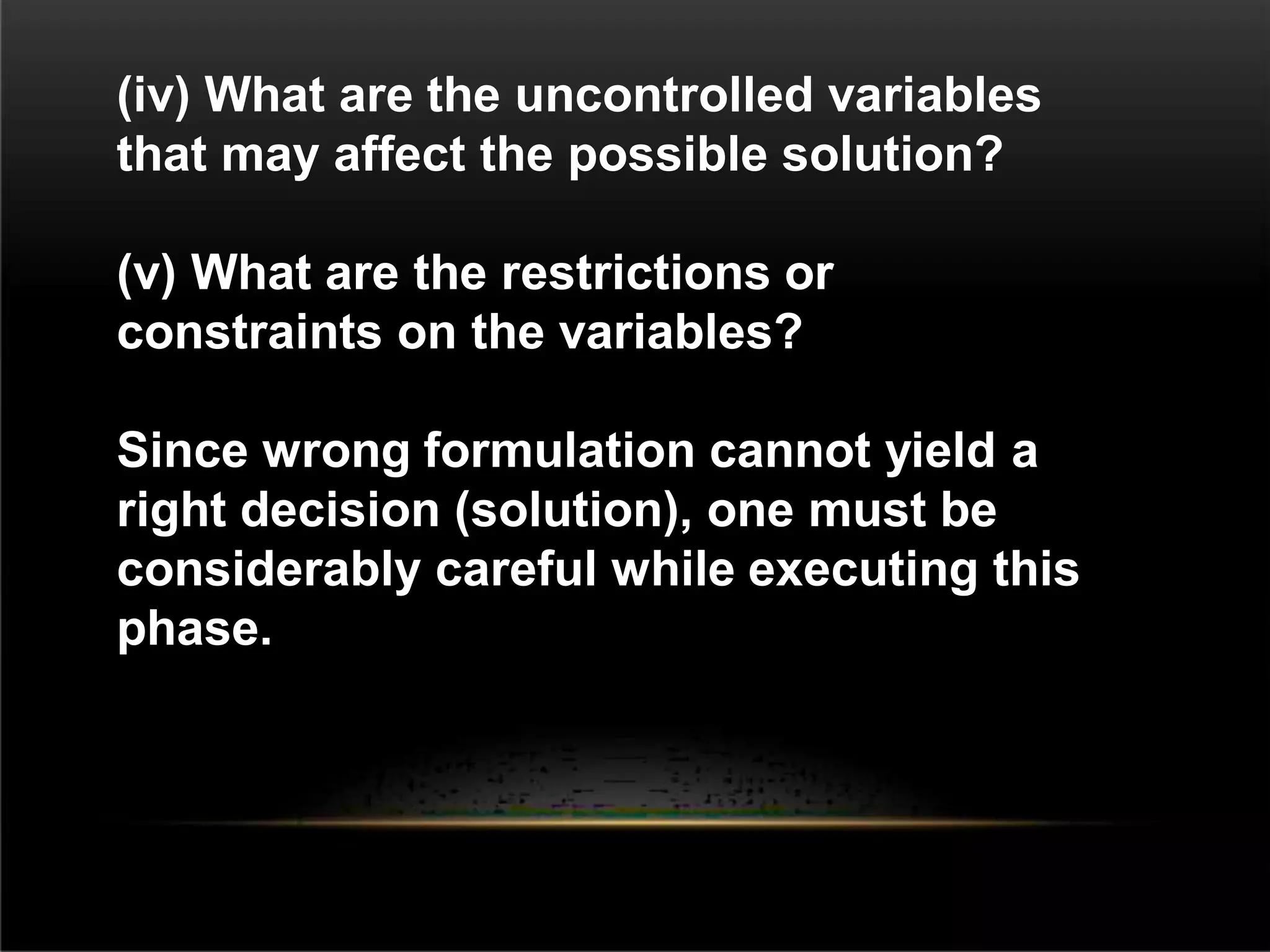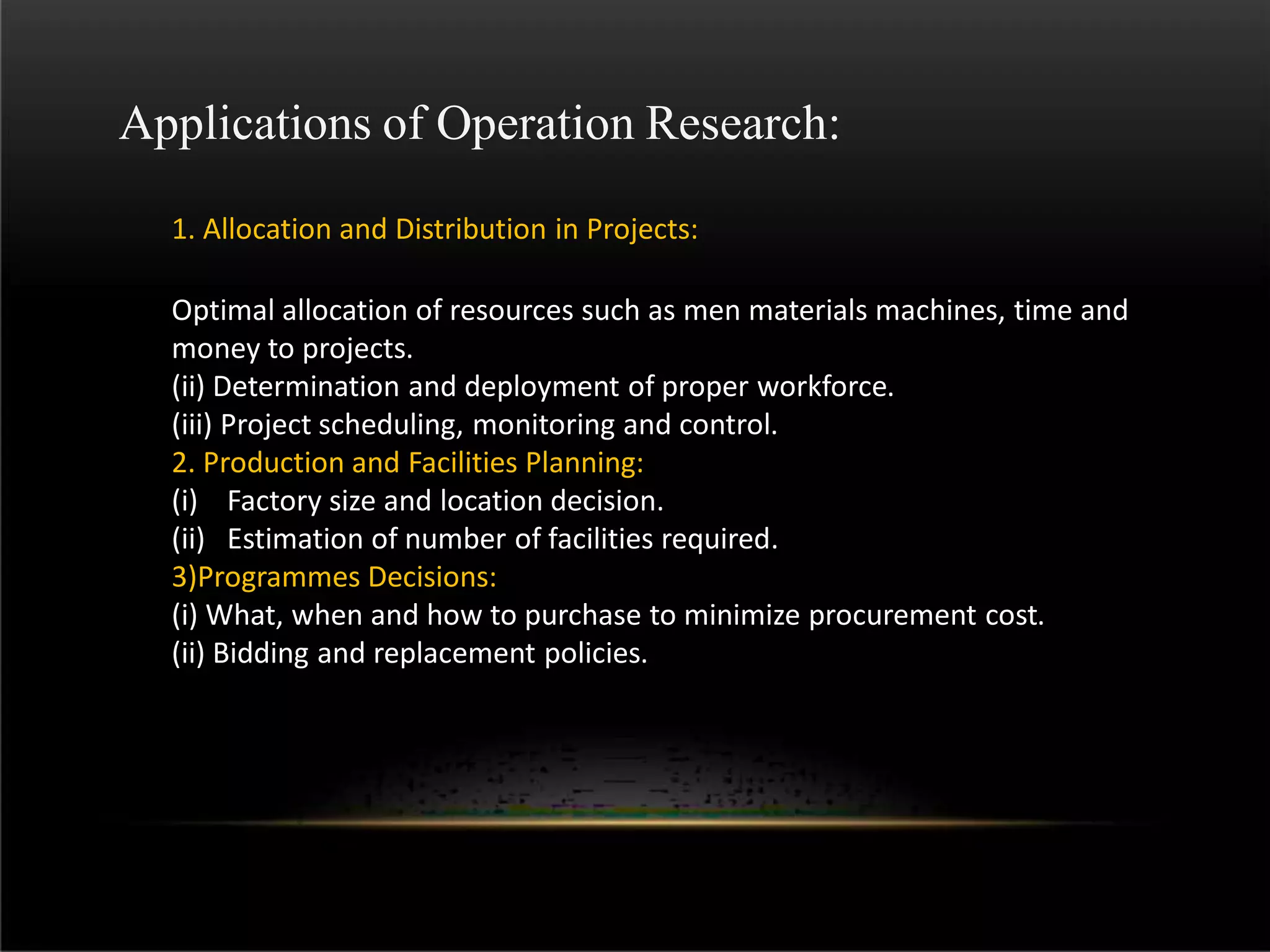This document provides an overview of operations research (OR). It defines OR as the scientific approach to problem solving and decision making through mathematical modeling and analysis. The document outlines the history, terminology, problem solving process, and applications of OR. Key points include that OR uses scientific methods to help organizations make better decisions, solve complex problems, and optimize performance across various industries and applications such as production, marketing, finance, and research.
